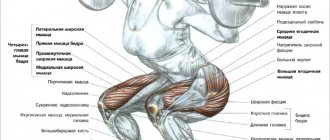What function and role do independent amino acids play in the human body. Their detailed list. It is no secret that the basis of the cells of our body are proteins - this is a well-known fact. Therefore, a person must promptly replenish protein reserves and eliminate any deficiency of such a useful element. But there is a nuance - not all protein is equally useful. Much depends on the set of amino acids that are in its composition.
Classification of amino acids
There are about 500 amino acids found in nature. However, only 22 are used in the genetic code to synthesize a variety of proteins. Depending on the ability to be synthesized within the body, all these amino acids are divided into three groups - non-essential, essential, and partially replaceable.
Rice. 1. Biological classification of amino acids.
The ten nonessential amino acids synthesized within the body include:
- alanine;
- asparagine;
- glutamine;
- glutamic acid;
- glycine;
- carnitine;
- ornithine;
- proline;
- serine;
- taurine
In the table we take a closer look at the essential and partially essential amino acids.
| Group | Amino acid | Formula | Meaning |
| Irreplaceable | Leucine | C6H13NO2 | Helps build and restore muscle tissue. Supports immunity. Relieves fatigue |
| Isoleucine | C6H13NO2 | Isomer of leucine. Participates in energy metabolism | |
| Valin | C5H11NO2 | Is a source of energy in muscle cells, maintains serotonin levels | |
| Phenylalanine | C9H11NO2 | Converts to tyrosine. Helps transmit nerve impulses | |
| Tryptophan | C11H12N2O2 | Synthesizes proteins | |
| Threonine | C4H9NO3 | Participates in the synthesis of collagen and elastin - muscle proteins. Stimulates the immune system, prevents fat deposition in the liver | |
| Lysine | C6H14N2O2 | Participates in the synthesis of muscle tissue | |
| Methionine | C5H11NO2S | Synthesized into many proteins and peptides | |
| Conditionally essential | Tyrosine | C9H11NO3 | Participates in the formation of structural, immune and enzymatic proteins |
| Cysteine | C3H7NO2S | Part of digestive enzymes. Promotes collagen formation | |
| Histidine | C6H9N3O2 | Stimulates growth, restores tissue. Present in hemoglobin | |
| Arginine | C6H14N4O2 | Stimulates the immune system |
Rice. 2. Structural formulas of essential amino acids.
The list of essential amino acids for children and adolescents includes arginine, which is constantly produced only in adulthood.
Consequences of a lack of amino acids in the diet
Insufficient protein content in food and chronic deficiency of essential amino acids lead to a negative nitrogen balance and the development of one of the forms of vitamin deficiency (pellagra), associated with a lack of tryptophan necessary for the formation. Symptoms of deficiency include muscle weakness, loss of appetite, tissue swelling, as well as brittle nails, dry skin, and hair loss.
Symptoms of amino acid deficiency:
- decreased immunity
- loss of muscle mass
- central nervous system inhibition
- suppression of hormone production
- fatty liver
- slow growth in children
***
Essential amino acids are amino acids important for metabolism that cannot be synthesized in the human body and must be supplied with protein foods. BCAA amino acids are available as sports nutrition - a combination of leucine, isoleucine and valine. Natural sources of amino acids are meat and other protein foods.
Where are they kept?
Essential amino acids are found in plant and animal foods:
- leucine – nuts, rice, fish, eggs;
- isoleucine – almonds, lentils, fish;
- valine – mushrooms, beans, meat, milk;
- phenylalanine – beef, eggs, cottage cheese, nuts;
- tryptophan – turkey, yogurt, beans, sesame, fish;
- threonine – nuts, milk, eggs;
- lysine – wheat, milk, fish;
- methionine – eggs, sesame seeds, rice, peanuts.
Rice. 3. Products containing essential amino acids.
The body can function without essential amino acids. However, their deficiency leads to disruption of protein synthesis, which entails a decrease in mental abilities and immunity. Excess creates a load on the liver and kidneys.
Daily serving of essential amino acids
You already know that for athletes, EAA is important not only for health , but also for achieving fitness goals. The recommended daily intake of essential amino acids has been determined by the World Health Organization as follows [21]:
| Essential amino acids | mg/kg body weight | mg per 70 kg |
| Histidine | 10 | 700 |
| Isoleucine | 20 | 1400 |
| Leucine | 39 | 2730 |
| Lysine | 30 | 2100 |
| Methionine + cysteine | 10.4 + 4.1 (total 15) | 1050 (total) |
| Phenylalanine + tyrosine | 25 (total) | 1750 (total) |
| Threonine | 15 | 1050 |
| Tryptophan | 4 | 280 |
| Valin | 26 | 1820 |
We've told you everything you need to know about EAA . Indeed, consuming essential amino acids is the path to health . Therefore, please tell us in the comments from which sources you most often receive EAA. If you liked this article, please support it by sharing it.
What have we learned?
Of the 500 amino acids that exist, 22 amino acids are necessary for a living organism to synthesize proteins that perform various functions. Based on their replaceability, amino acids are classified into nonessential, essential, and partially essential. Replaceable ones are synthesized inside the body, essential ones must be supplied with food, and partially replaceable ones are synthesized in the body in insufficient quantities. Eight amino acids are considered essential, and four are conditionally essential. Amino acids are found in animal and plant foods - eggs, meat, milk, legumes, rice.
Amino acid content in cereals
The leader in the content of essential amino acids in cereals is buckwheat and similar pseudocereals (in particular, quinoa and amaranth). Unlike wheat, rice and oatmeal, buckwheat contains a full range of amino acids important for metabolism. Consumption of 100 g of buckwheat covers about 10% of the body's needs for essential amino acids.
Essential amino acids in cereals, grams per 100 g of dry product:
| Lysine | Cystine | Isoleucine | Leucine | |
| Amaranth | 5.0 | 4.0 | 3.0 | 4.7 |
| Buckwheat | 6.2 | 1.6 | 3.7 | 6.2 |
| Wheat | 2.8 | 2.2 | 3.3 | 6.7 |
| Rice | 3.8 | 1.4 | 3.8 | 3.2 |
| Milk | 5.8 | 2.1 | 5.0 | 7.3 |
Essential components
More than three hundred types of amino acids are known. But only a small part of them is used as building blocks for the formation of protein compounds and are protein monomers. List of building structures of human proteins:
- leucine (L);
- isoleucine (I);
- valine (V);
- lysine (K);
- methionine (M);
- threonine (T);
- tryptophan (W);
- phenylalanine (F);
- histidine (H);
- arginine ®;
- cysteine (C);
- glutamine (Q);
- glutamic acid (E);
- alanine (A);
- asparagine (N);
- tyrosine (Y);
- glycine (G);
- proline (P);
- aspartic acid (D);
- serine (S).
The first nine of the amino acids belong to the essential amino acid group (AG). This means that these compounds are not produced in the human body. These acids can only be obtained externally through food. Thus, it becomes obvious how important it is to eat rationally. Proteins are among the most important nutritional components on Earth. That is why almost all food necessary for human life contains some amount of protein. As a result, all the variety of chemical properties of amino acids, as well as their large number, predetermine a large variation in finished protein compounds.
But it is known that protein molecules differ in their composition. That is why not every food is considered complete in terms of the presence of necessary components in it. Unfortunately, there are many examples where the lack of certain amino acid substances in large groups of people provoked the appearance of quite severe pathologies.
Essential substances
If we talk about the chemical structure of compounds of this class, they have a fairly branched chain when compared with the general formula of amino acids. In terms of importance, among all essential amino acids (NAs) having a similar structure, the first places are occupied by:
- Leucine. This component is responsible for the recovery processes in muscle tissue. It is very effective and is transformed into glucose much faster than other amino acids, which prevents catabolism during high physical activity. Leucine also takes part in the restoration of muscle fiber damage that occurs as a result of microtrauma, and also has a regulating effect on blood sugar levels. Forces the secretory activity of growth hormone and helps reduce the amount of fat in the body. Sources of leucine include legumes, whole wheat, rice crops, nuts, meat products, and soy flour.
- Isoleucine. Helps increase physical endurance and also takes part in the processes of muscle tissue restoration. It has a significant effect on maintaining the continuous formation and flow of energy into the organs. Sources of this amino acid include eggs, nuts, soy, and meat.
- Valin. Also refers to one of the branched chain amino acids. Promotes processes associated with body growth, as well as tissue restoration. Responsible for providing the body with energy. Valine is essential for normal mental activity. In the liver, this compound helps eliminate excess nitrogenous components. This important building substance also helps in the treatment of liver and brain diseases if the pathology is associated with excessive alcohol intake. It is recommended to take this compound together with isoleucine and leucine. Sources of valine include milk-based products, soy protein, mushrooms, and meat products.
These building components are also called BCAA. These amino acid compounds are extremely important for the formation of muscle mass. There are quite a lot of such substances in dairy products, fish and meat. Very few substances are found in plant foods. That is why, if a person’s diet includes only plant foods, then he is unlikely to be able to boast of voluminous biceps.
Conditionally replaceable connections
NAs play a vital role not only in building muscle proteins, but also take part in the synthesis of hormonal compounds and various vitamins. The latter are needed to regulate metabolic processes in the body. This is why it is so important to ensure that amino acid deficiencies do not occur. For people involved in fitness or sports, this is especially important. During high physical activity, the body consumes essential substances most actively. This means that building components that cannot be fulfilled by the body itself must be constantly obtained additionally from the outside, including them in your diet.
A conditionally essential amino acid is an amino acid whose synthesis is affected by various conditions (various pathologies, age, physical condition, etc.). For example, such amino acid substances include arginine. Its production in limited quantities is observed in the elderly and children.
NA deficiency in the body can be partially compensated by the synthesis of other amino acids. The latter must be precursors of essential amino acids or an intermediate in the process of producing the necessary compounds. For example, glutamic acid is to some extent able to replace arginine, and tyrosine can compensate for phenylalanine deficiency.
But it should be said that complete replacement of necessary substances in the human body never occurs. Therefore, it is necessary to control the amount of supply of essential components from outside. In turn, this depends on the specific characteristics of the body’s condition.
Main functions of proteins:
- Transport function - ensures the transfer of various substances through the blood to tissues (oxygen, lipids, etc.);
- Protective - proteins of a special type (immunoglobulins) are responsible for immunity - protecting the internal constancy of the body from living bodies and substances that carry signs of genetically foreign information;
- Energy - in conditions of shortage of food rich in carbohydrates and fats, proteins can also act as reserve nutrients to supply the body with energy;
- Proteins - enzymes - are catalysts for biochemical processes and directly affect metabolic processes.
Being high-molecular organic substances, proteins consist of alpha amino acids linked into a chain by a peptide bond. During the digestion process, proteins are broken down into amino acids, which are used for the biosynthesis of the body's own proteins or used as a source of energy.
Of the more than twenty known amino acids, eight are essential, that is, they are not synthesized by the body and must be supplied with food. The closer the amino acid composition of food proteins is to the composition of the protein in our body, the more valuable it is.
Meat, fish, eggs, and dairy products contain all eight essential amino acids and are called complete proteins. Proteins from plant foods - legumes, grains, nuts, seeds - are called incomplete proteins.
Here it is worth saying that by consuming a variety of plant foods during the day, your body will receive all the proteins it needs, which it synthesizes independently. Read more about how to combine different foods to get complete protein HERE.











